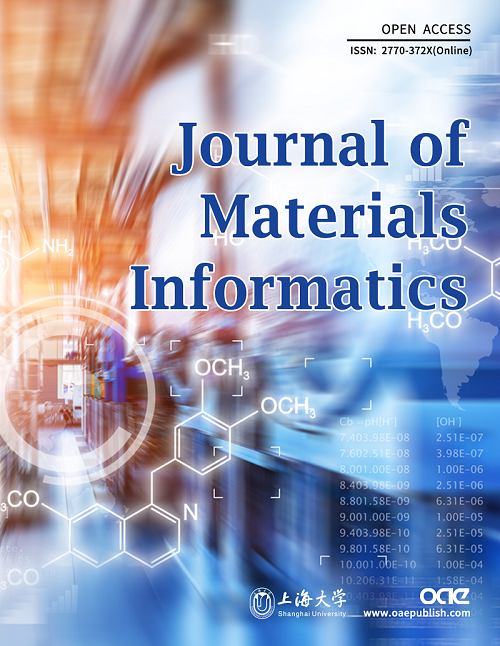REFERENCES
1. Gogotsi, Y.; Huang, Q. MXenes: two-dimensional building blocks for future materials and devices. ACS. Nano. 2021, 15, 5775-80.
2. Wu, Y.; Sun, M. Recent progress of MXene as an energy storage material. Nanoscale. Horiz. 2024, 9, 215-32.
3. Björk, J.; Rosen, J. Functionalizing MXenes by tailoring surface terminations in different chemical environments. Chem. Mater. 2021, 33, 9108-18.
4. Ayodhya, D. A review of recent progress in 2D MXenes: synthesis, properties, and applications. Diam. Relat. Mater. 2023, 132, 109634.
5. Gouveia, J. D.; Galvão, T. L. P.; Iben Nassar, K.; Gomes, J. R. B. First-principles and machine-learning approaches for interpreting and predicting the properties of MXenes. npj. 2D. Mater. Appl. 2025, 9, 529.
6. Bhat, M. Y.; Adeosun, W. A.; Prenger, K.; et al. Frontiers of MXenes-based hybrid materials for energy storage and conversion applications. Adv. Compos. Hybrid. Mater. 2025, 8, 1121.
7. Gokul Eswaran, S.; Rashad, M.; Santhana Krishna Kumar, A.; El-Mahdy, A. F. M. A comprehensive review of Mxene-based emerging materials for energy storage applications and future perspectives. Chem. Asian. J. 2025, 20, e202401181.
8. Worku, A. K.; Alemu, M. A.; Ayele, D. W.; Getie, M. Z.; Teshager, M. A. Recent advances in MXene-based materials for high-performance metal-air batteries. Green. Chem. Lett. Rev. 2024, 17, 2325983.
9. Ko, T. Y.; Ye, H.; Murali, G.; et al. Functionalized MXene ink enables environmentally stable printed electronics. Nat. Commun. 2024, 15, 3459.
10. Yan, J.; Cao, D.; Li, M.; et al. High-throughput computational screening of all-MXene metal-semiconductor junctions for Schottky-Barrier-Free contacts with weak fermi-level pinning. Small 2023, 19, e2303675.
11. Chen, J.; Liu, X.; Li, Z.; Cao, F.; Lu, X.; Fang, X. Work-function-tunable MXenes electrodes to optimize p-CsCu2I3/n-Ca2Nb3-xTaxO10 junction photodetectors for image sensing and logic electronics. Adv. Funct. Mater. 2022, 32, 2201066.
12. Ahn, S.; Han, T. H.; Maleski, K.; et al. A 2D titanium carbide MXene flexible electrode for high-efficiency light-emitting diodes. Adv. Mater. 2020, 32, e2000919.
13. Gregoire, J. M.; Zhou, L.; Haber, J. A. Combinatorial synthesis for AI-driven materials discovery. Nat. Synth. 2023, 2, 493-504.
14. Ghalati, M. K.; Zhang, J.; El-Fallah, G. M. A. M.; Nenchev, B.; Dong, H. Toward learning steelmaking - a review on machine learning for basic oxygen furnace process. Mater. Genome. Eng. Adv. 2023, 1, e6.
15. Lombardo, T.; Duquesnoy, M.; El-Bouysidy, H.; et al. Artificial intelligence applied to battery research: hype or reality? Chem. Rev. 2022, 122, 10899-969.
16. Shi, Y.; Zhang, Y.; Wen, J.; et al. Interpretable machine learning for stability and electronic structure prediction of Janus III-VI van der Waals heterostructures. Mater. Genome. Eng. Adv. 2024, 2, e76.
17. Schleder, G. R.; Acosta, C. M.; Fazzio, A. Exploring two-dimensional materials thermodynamic stability via machine learning. ACS. Appl. Mater. Interfaces. 2020, 12, 20149-57.
18. Huang, M.; Wang, S.; Zhu, H. A comprehensive machine learning strategy for designing high-performance photoanode catalysts. J. Mater. Chem. A. 2023, 11, 21619-27.
19. Bai, X.; Lu, S.; Song, P.; et al. Heterojunction of MXenes and MN4-graphene: machine learning to accelerate the design of bifunctional oxygen electrocatalysts. J. Colloid. Interface. Sci. 2024, 664, 716-25.
20. Tao, Q.; Xu, P.; Li, M.; Lu, W. Machine learning for perovskite materials design and discovery. npj. Comput. Mater. 2021, 7, 23.
21. Siriwardane, E. M. D.; Zhao, Y.; Perera, I.; Hu, J. Generative design of stable semiconductor materials using deep learning and density functional theory. npj. Comput. Mater. 2022, 8, 164.
22. Roy, P.; Rekhi, L.; Koh, S. W.; Li, H.; Choksi, T. S. Predicting the work function of 2D MXenes using machine-learning methods. J. Phys. Energy. 2023, 5, 034005.
23. Prasad Raju, N. V. D. S. S. V.; Devi, P. N. A comparative analysis of machine learning algorithms for big data applications in predictive analytics. Int. J. Sci. Res. Manag. 2024, 12, 1608-30.
24. Zhong, X.; Gallagher, B.; Liu, S.; Kailkhura, B.; Hiszpanski, A.; Han, T. Y. Explainable machine learning in materials science. npj. Comput. Mater. 2022, 8, 204.
25. Gjerding, M. N.; Taghizadeh, A.; Rasmussen, A.; et al. Recent progress of the Computational 2D Materials Database (C2DB). 2D. Mater. 2021, 8, 044002.
26. Haastrup, S.; Strange, M.; Pandey, M.; et al. The Computational 2D Materials Database: high-throughput modeling and discovery of atomically thin crystals. 2D. Mater. 2018, 5, 042002.
27. Li, H.; Deng, C.; Li, F.; Ma, M.; Tang, Q. Investigation of dual atom doped single-layer MoS2 for electrochemical reduction of carbon dioxide by first-principle calculations and machine-learning. J. Mater. Inf. 2023, 3, 25.
28. Abdullah, G. M. S.; Ahmad, M.; Babur, M.; et al. Boosting-based ensemble machine learning models for predicting unconfined compressive strength of geopolymer stabilized clayey soil. Sci. Rep. 2024, 14, 2323.
29. Alzamzami, F.; Hoda, M.; El Saddik, A. Light gradient boosting machine for general sentiment classification on short texts: a comparative evaluation. IEEE. Access. 2020, 8, 101840-58.
30. Ouyang, R.; Curtarolo, S.; Ahmetcik, E.; Scheffler, M.; Ghiringhelli, L. M. SISSO: a compressed-sensing method for identifying the best low-dimensional descriptor in an immensity of offered candidates. Phys. Rev. Mater. 2018, 2, 083802.
31. Lundberg, S.; Lee, S. I. A unified approach to interpreting model predictions. arXiv 2017, arXiv:1705.07874. https://doi.org/10.48550/arXiv.1705.07874. (accessed 1 Aug 2025).
32. Sun, T.; Wang, Z.; Zeng, L.; Feng, G. Identifying MOFs for electrochemical energy storage via density functional theory and machine learning. npj. Comput. Mater. 2025, 11, 90.
33. Li, S. Density functional theory for catalyst development and mechanistic insights. Nat. Rev. Clean. Technol. 2025, 1, 602.
34. Chen, L.; Chen, Z.; Yao, X.; et al. High-entropy alloy catalysts: high-throughput and machine learning-driven design. J. Mater. Inf. 2022, 2, 19.
35. Xu, M.; Xu, M.; Miao, X. Deep machine learning unravels the structural origin of mid-gap states in chalcogenide glass for high-density memory integration. InfoMat 2022, 4, e12315.
36. Pearson, K. VII. Mathematical contributions to the theory of evolution. - III. Regression, heredity, and panmixia. Philos. Trans. R. Soc. Lond. A. 1896, 187, 253-318.
37. Ma, B.; Wu, X.; Zhao, C.; et al. An interpretable machine learning strategy for pursuing high piezoelectric coefficients in (K0.5Na0.5)NbO3-based ceramics. npj. Comput. Mater. 2023, 9, 229.
38. Wang, T.; Hu, J.; Ouyang, R.; et al. Nature of metal-support interaction for metal catalysts on oxide supports. Science 2024, 386, 915-20.
39. Friedman, J. H. Greedy function approximation: a gradient boosting machine. Ann. Statist. 2001, 29, 1189-232. https://www.jstor.org/stable/2699986. (accessed 1 Aug 2025).
40. Roy, A.; Chakraborty, S. Support vector machine in structural reliability analysis: a review. Reliab. Eng. Syst. Saf. 2023, 233, 109126.
42. Xu, L.; Kong, Z.; Zhu, B.; et al. Mn-atomic-layered antiphase boundary enhanced ferroelectricity in KNN-based lead-free films. Nat. Commun. 2025, 16, 5907.
43. Naimi, A. I.; Balzer, L. B. Stacked generalization: an introduction to super learning. Eur. J. Epidemiol. 2018, 33, 459-64.
44. King, R. D.; Orhobor, O. I.; Taylor, C. C. Cross-validation is safe to use. Nat. Mach. Intell. 2021, 3, 276.
45. Hanifi, S.; Cammarono, A.; Zare-Behtash, H. Advanced hyperparameter optimization of deep learning models for wind power prediction. Renew. Energy. 2024, 221, 119700.
46. Yang, Z.; Sheng, Y.; Zhu, C.; et al. Accurate and explainable machine learning for the power factors of diamond-like thermoelectric materials. J. Materiomics. 2022, 8, 633-9.
48. Khazaei, M.; Arai, M.; Sasaki, T.; Ranjbar, A.; Liang, Y.; Yunoki, S. OH-terminated two-dimensional transition metal carbides and nitrides as ultralow work function materials. Phys. Rev. B. 2015, 92, 075411.








